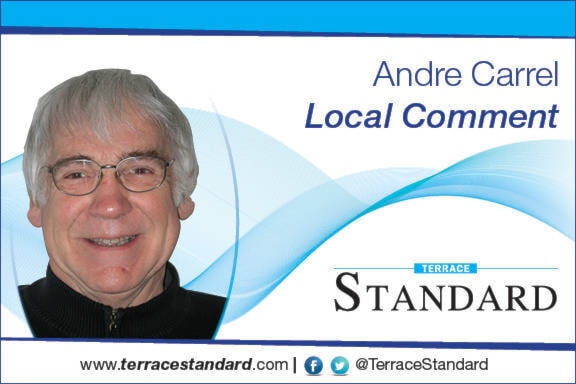When it was announced that a new hospital for Terrace – a truly regional hospital – was about to become a reality, plans and financing complete, contract awarded, shovels in the ground, the fact that a less than 20-year old building accommodating associated health care services would be demolished along with the hospital slipped under the community’s radar screen. Terrace was about to receive a new hospital and a new Seven Sisters facility; a long-standing dream was about to be realized.
It was not until months after construction on this gigantic project got underway that questions began to be asked – not about the hospital itself, but about Seven Sisters. The demands for the services provided exceeded that building’s capacity, but although the new Seven Sisters will provide 25 beds, 5 more than the existing building, that additional capacity will not meet the region’s need (bear in mind, this is not a community facility, it is a regional facility) for respite care beds. The Skeena Valley Seniors Society has documented the urgent need for a range of health care services related to, but distinct from a hospital’s intensive and acute care services.
The plans call for the existing Seven Sisters building to be demolished and replaced with a parking lot. There is sufficient space on the site to accommodate the designated number of parking spaces and the existing Seven Sisters building. The modifications required to move the new hospital’s main entry are minimal; essentially, it amounts to exchanging the respective entry points for staff and the public. The cost of that change is insignificant relative to the project’s overall cost, and it may be offset by forestalling the cost of demolishing the building.
The new facility’s capacity will, at best, serve current needs for the services now provided in the old facility. It will not meet the broader respite accommodation needs of our region’s aging population. What about the future? After having invested more than $630 million for a new regional hospital, and after having demolished a perfectly functional care facility less than 20 years old to make room for a parking lot, how likely is it that, in five years or so the provincial government would approve $10 or more million for additional respite care beds in Terrace?
The question the community needs to ask is this: if the existing Seven Sisters building were located across Tetrault Street, or anywhere other than on the parcel in question, would we abandon or demolish this building for any reason at all, or would we coordinate the services provided by the new and old Seven Sisters to substantially broaden the range of health care services for our aging population?
This is a rare situation in which a change to plans in the advanced stages of implementation will not only safeguard a community asset, will not only broaden the services to be provided by a new Mills Memorial but, in doing so, will actually save money (yes, tax dollars) over the long term.
The Skeena Valley Seniors Society is calling for a community protest in support of the old Seven Sisters. This initiative needs the immediate and vocal support from the entire community and all its organizations, including city council, the Regional District of Kitimat-Stikine, the Terrace & District Chamber of Commerce, and all other organizations with an interest in the community’s and the region’s future.
